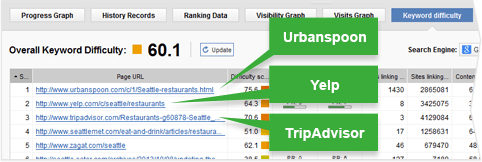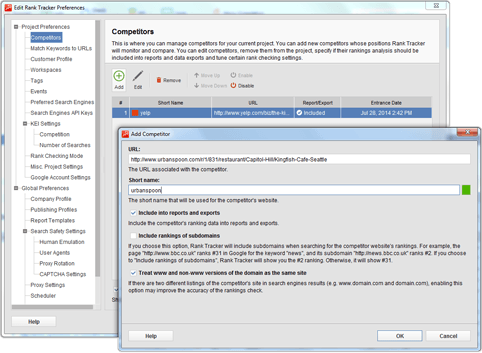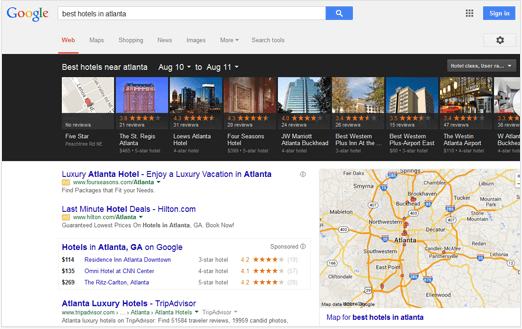GOOGLE LAUNCHES NEW PIGEON UPDATE —
how does it affect your website?
A few days ago Google pushed out a new and major algorithm update for local search (which industry’s leading SEO resource “Search Engine Land” called “Pigeon” update). There aren’t many details disclosed about the so-called Pigeon yet, but webmasters report considerable changes in their local rankings over the past few days.
To make sure you’ve got all the freshest information at your fingertips, we’ve put up this short compilation to explain what “Pigeon” is, how it affects your rankings and how to adapt your SEO strategy for the changes.

So, what do we know about the “Pigeon”?
Google confirmed that the update started to roll out on July 24 for US English results, and it’s not yet known when the update would roll out more widely in other countries and languages.
The aim of the update is to provide a more useful, relevant and accurate local search results. And unlike Penguin and Panda updates, this is not a penalty-based update(aimed at cleaning the SERPs from low-quality content), but a core change to the local search ranking algorithm.
Now, to give you a better idea of the update, we’ve tried to outline all the changes going on (both those claimed by Google and noticed by webmasters) and give some advice for website owners who’ve been affected.
What’s happening? One of the key changes seen after the update is a drastically lower number of queries that now include a local listing pack on their SERPs.
According to SERP feature graph by MOZ Cast, this number falls from 12,1% of queries on July 23rd to only 3,3% on July 27th.
What should you do? If over the past few days your website has encountered a traffic drop, this may well be due to the disappearance of certain of your local listings.
If that is the case, in the short run you may need to cover the traffic losses with a PPC campaign, and in the long run — focus on getting Web search listings for those keywords.
Tip: Re-check your rankings with Rank Tracker using the Universal search results tracking feature (go to Preferences -> Rank Checking Mode and mark theUse Universal search Results checkbox)
Now switch to History Records tab — you can instantly see if local listings have disappeared from the SERP.
What’s happening? The new local search algorithm is said to be more tied with the traditional Web search ranking signals.
Simply speaking, this may mean that local rankings will now be more determined by domain authority, backlinks and all kinds of other SEO rankings factors.
What should you do? If your local rankings have suddenly dropped over the past few days, this may mean your site’s general SEO characteristics lack behind those of your competition.
Run a thorough competition research to see how your backlinks, content and other SEO characteristics stand to those of other high ranking websites.
For step-by-step SEO, instructions check out the SEO book.
What’s happening? According to the first post-update researches, Yelp and other local directory sites have seen a considerable boost in rankings. For some queries, the entire SERP is built from well-known local directories only.
What should you do? Even if less of your potential clients may now be able to find your biz website, many more of them can find you via local directory sites. This makes it crucial to build a solid business presence on leading local directories in your industry.
1. Find the most influential local directories in your niche
See which directories are currently ranking high for your targeted keywords after the update.
Tip: In Rank Tracker you’ll find top-10 ranking websites for each of your keywords in the Keyword Difficulty table:
Now switch to History Records tab — you can instantly see if local listings have disappeared from the SERP.
2. Make sure your business is listed in each of these directories.
Submit your business to those directories, that are currently ranking high for your keyword, but don’t list your business yet. You can also check out this list of “Best local citations by category” for more local directories ideas.
3. Track how rankings change for your different listings.
This way you always know which of the listings should be your priority in terms of freshest data, biggest number of reviews and so on.
Tip: Add all your business listings to Rank Tracker projects as competitors — this way you can conveniently track their rankings side by side with your main website.
What’s happening? Unlike the usual local listing packs, local carousel results remain unaffected by the update and show up with almost the same frequency as before. This means they can still be a great way to gain extra exposure for some local keywords (though carousel listings a present for just 1% of keywords queries.)
What should you do? Carousel results put a heavy emphasis on your listing’s image and rating, while showing all options side-by-side. So make sure to put a nice, high-quality and attractive photo in your Google+ business profile and encourage your customers to review your business.
Though the changes in SERPs now seem to be quite considerable, the basic principles of local SEO are expected to remain the same. So here are some general recommendations for your local business to get better Google exposure.
1. Individual Google+ Local page for your business
Creating a Google+ Local page for your local business is the first step to being included in Google’s local index. Your second step is to verify your ownership of the listing. This typically involves receiving a postcard/letter from Google containing a pin number which you must enter in order to complete verification.
2. Proper category for your Google+ Local page
If you wish to appear in the local results for a search like “dentists in denver”, your business must be categorized as a dentist. If it is categorized as a certified public accountant, you have no hope of appearing for your important search terms.
3. Local area code on Google+ Local page
Using local area code phone number as a primary phone number on Google+ Local page is considered a best practice. The area code of the phone number should match the area code/codes traditionally associated with your city of location.
4. NAP on your website matching NAP on your Google+ Local page
Google will be looking at the website you’ve linked to from your Google Places/Google+ Local page and cross reference the name, address and phone number of your business. If all elements match, you’re good to go.
5. NAP consistency in all your business listings
Make sure your business name, address and phone number are also consistent in all local directories where your business is listed. Different addresses listed for your business on Yelp and TripAdvisor, for instance, may put your rankings to nowhere.
6. Large number of positive customer reviews on Google+ Local page and on third-party sources
The number of positive reviews has a proven influence on local search rankings. So make sure to encourage happy customers to leave positive reviews of your biz.
7. City or state included into your website’s title tags.
Another important factor for your “local” landing page is to have the city or state you’re targeting included into its Title tag.
8. Product/service keyword in business title
It is also believed that having the name of a core product or service in your business name may give you some advantage over competitors who lack this.






